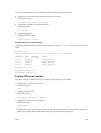
Figure 67. Configuring Far-End Failure Detection
The report consists of several packets in SNAP format that are sent to the nearest known MAC address.
In the event of a far-end failure, the device stops receiving frames and, after the specified time interval,
assumes that the far-end is not available. The connecting line protocol is brought down so that upper
layer protocols can detect the neighbor unavailability faster.
FEFD State Changes
FEFD has two operational modes, Normal and Aggressive.
When you enable Normal mode on an interface and a far-end failure is detected, no intervention is
required to reset the interface to bring it back to an FEFD operational state. When you enable Aggressive
mode on an interface in the same state, manual intervention is required to reset the interface.
FEFD enabled systems (comprised of one or more interfaces) automatically switchs between four
different states: Idle, Unknown, Bi-directional, and Err-disabled.
1. An interface on which FEFD is not configured is in Normal mode by default.
2. After you enable FEFD on an interface, it transitions to the Unknown state and sends an FEFD packet
to the remote end of the link.
3. When the local interface receives the echoed packet from the remote end, the local interface
transitions to the Bi-directional state.
Layer 2
539


















